Blog
Binding Your Belly After Birth
Binding Your Belly After Birth
In many cultures around the world, it is common for women to bind their bellies after giving birth, and more waist trainers, wraps, splints, binders, and braces are hitting the market as core health takes center stage. However, waist training is NOT the same as therapeutic splinting, and spanx-like garments are in a whole other category of their own.
Think of a good quality splint like a walking cast: doctors realized that when they put hard braces or casts on people with broken ankles and kept them off their feet, the unloaded bones didn’t heal as fast, so casts that allowed walking were engineered. If you only brace your belly muscles — or you brace them so tightly you can’t breathe — and you don’t rebuild those neuromuscular connections with strategic exercises, you won’t heal as quickly!
When done in concert with some basic restorative exercises and applied with the correct strategies, I have seen time and again how therapeutic abdominal splinting improves core function, diminishes dysfunctional patterns, and narrows diastasis recti (DR). Wrapping done right will assist a prenatal belly with fetal alignment, provide additional external support to a postnatal belly after birth, support the skin and internal organs after a major weight loss, and speed the healing process after abdominal surgeries like C-section or hernia repair.
Splinting is my preferred term because it speaks to supporting a compromised body part, rather than binding or bracing which hint at constriction.
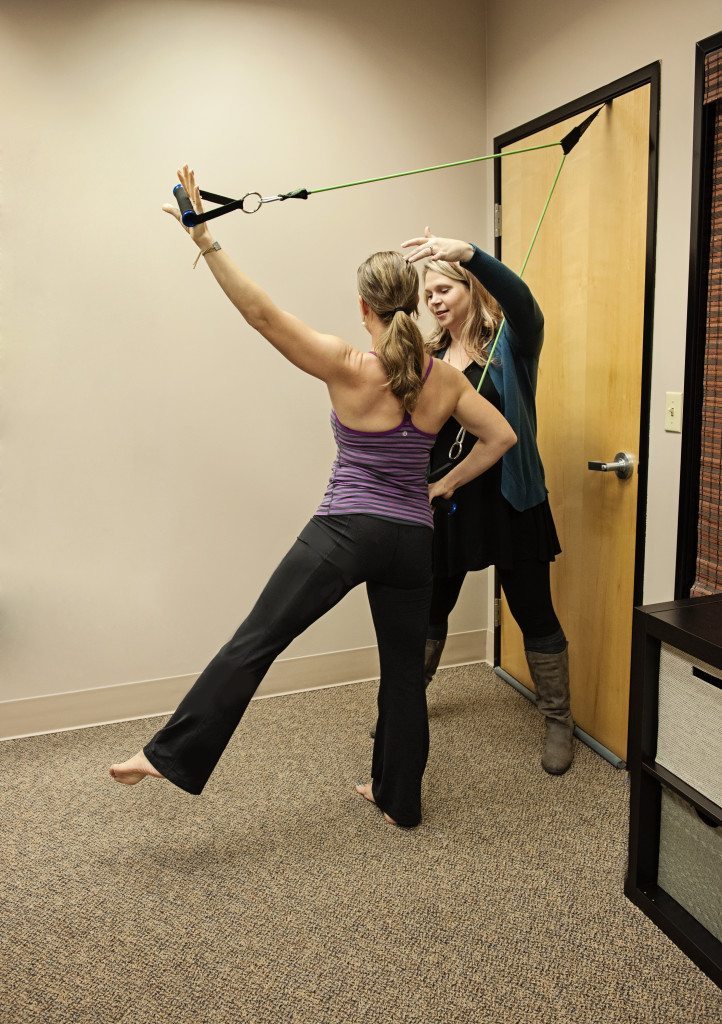
Based on the case studies and expertise of licensed neuromuscular physical therapist and core rehabilitation expert, Kelly Dean (pictured working with me at her clinic at The Tummy Team), I recommend supporting the core with a non-constrictive splint during pregnancy if a diastasis recti (DR) exists that is deep and wider than 3 finger-widths.
During your first pregnancy, your diastasis may not reach that level until your 2nd or 3rd trimester, but with subsequent pregnancies it may be necessary to splint in the 1st trimester if your DR is already wide.
Read this research abstract {click} about how wearing a belt helps the core activate and reduce lower back and leg pain!
Gave birth this morning to our sweet second daughter (10lbs 12oz!) after about 4 hours of labor and just want to say I am SO thankful for my splint. I put it on as soon as I got up to clean up and it is helping so so much with my pain, and with the weakness and dizziness I felt when I stood up, with my balance … everything! I am stunned with the difference and with how good I feel. And dismayed that every new momma doesn’t have access to or knowledge of splinting! I mean the feeling of stability and security that it offers in such a vulnerable time is phenomenal. It’s a shame that every hospital doesn’t provide this as a standard of care for postpartum women! Thanks to Fit2B for everything. —Catie W.
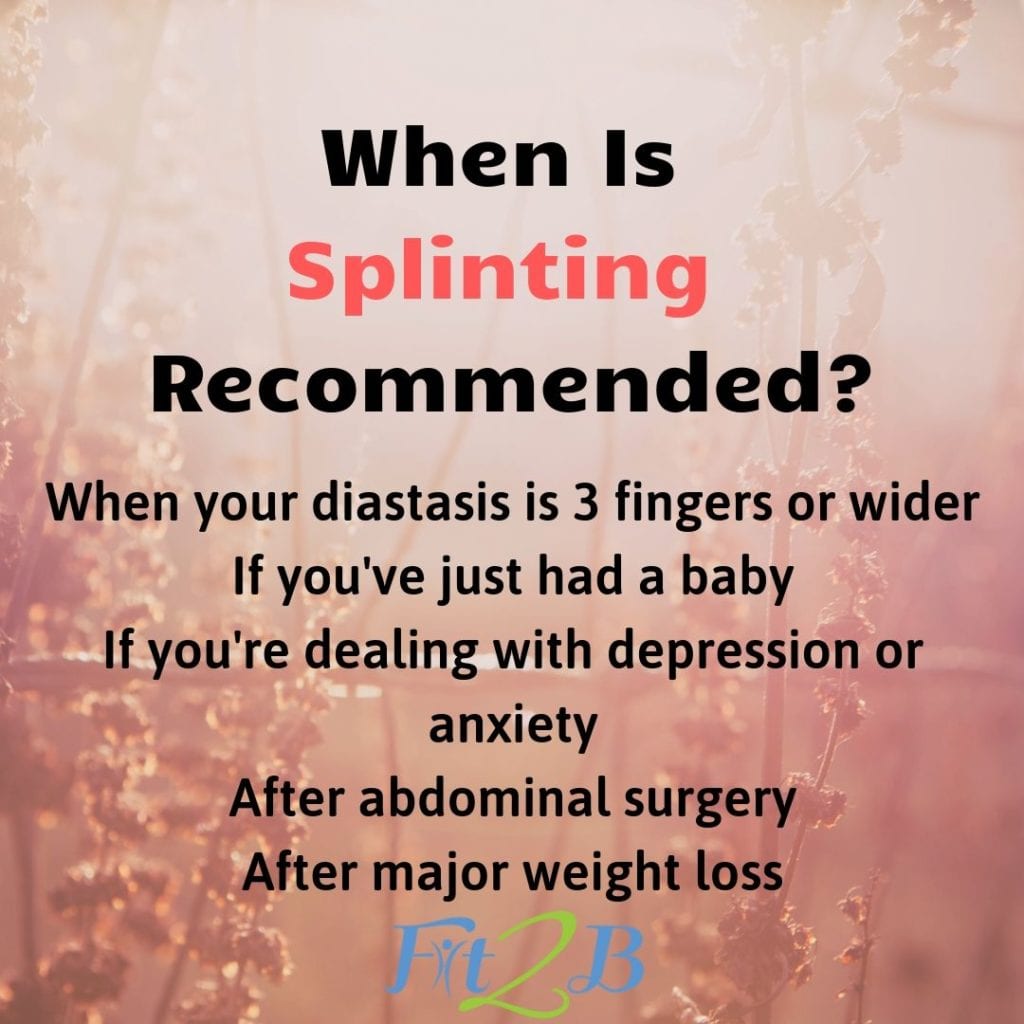
If there is physical or emotional instability, Kelly recommends applying a splint to immediately stabilize and calm their senses. She presented a strong case at her continuing education workshop for splinting to help postpartum depression regardless of whether or not someone has diastasis recti. Kelly and I have both witnessed many women instantly shift emotional gears as soon as their splint is securely in place. The transformation is incredible!
With surgical births, a few extra days might be needed for the wound to heal before wrapping, but I’ve spoken with labor and delivery nurses who splint their c-mamas right off and ones who wait, and as long as the dressing is being tended and allowed breaks to breathe, the benefits of immediate splinting in terms of faster recovery far outweigh any possible risks.
I used a splint after my fourth C-section. I waited until day 10 and I feel it was really helpful. Splinting gave me great support and it helped with the terrible backache I’ve suffered with after my precious babies. I felt it was extra helpful to keep me in check with my alignment. (It was not very comfortable if I decided to hunch over or tuck my tailbone, especially while nursing constantly.) By 10 weeks my diastasis was at a 1, from a 3. I was not super diligent with working out, just kept to proper alignment, some belly breaths and a few pulses here and there. I really feel the splint helped postpartum recovery for me. I also found that I have feeling between my belly button and scar, it has been numb since my first C-section, 6 years ago. The only difference has been splinting and tummy safe exercising. —Kara E.
To be clear, I never recommend stand-alone splinting without the proper exercises to go with it. Hands-on help is often critical for complete core restoration, and we’ve put together a list of physical therapists in our Directory of Diastasis Experts to whom I’d trust my own tummy. For those whose location and finances prohibit personalized care, we provide over 200 professional filmed workouts that are approved by physical therapists and midwives for progressive core strengthening.
The result of NOT supporting the abs during and after pregnancy is typically an even wider diastasis recti (DR) that is harder to heal from — because the more your abs separate, the longer it takes to pull them back together.
I mean, let’s just think about this for a minute: how can we expect a tired new mama feeding a hungry newborn in awkward positions for 11-12 hours a day to do anything but rest?
Most women have a wide DR that falls into that 3 finger-width domain right after they give birth, no check needed. We don’t need to go digging around in freshly postpartum tummies, prodding sensitive connective tissue to know that, because we have this research. We know that mama needs as much support as we can offer her in those early weeks and … forever, am I right?
When the two sides of your abdominal wall have separated to 3 finger widths or more, your belly can have a really hard time “getting a grip” again. Splinting helps to bring the two sides of your abs back closer together.
In the case of pregnancy, obesity, surgery, chronic poor posture/alignment, or other activities that stress or bulge the abdominal wall, the band of fascia that holds the two sides of your abs together can be pressured out to cellophane thinness. This is when diastasis recti (DR) occurs: the vertical line in your “six-pack” weakens and allows the two sides of your abdominals to shift apart. Diastasis is essentially another fruit on the tree of a weak core, showing up alongside other symptoms like incontinence, chronic lower back pain, a pregnant-looking tummy when you’re not pregnant, low libido, no desire to exercise … and all of that just contributes to further core weakness!
Just like any prop that is “standing in the gap” while the real parts heal, belly binders and splints can cause some discomfort or even harm. A belly brace that doesn’t let you move or breathe is counter-productive. If your splint makes your private parts bulge, if you’re leaking more, or if it’s sabotaging your progress because you hate it, please discontinue using it until you can speak with a professional. Usually, a quality ab wrap only needs to be used for a few weeks to help you feel what your core should be doing. If you start to wean off your splint and your DR opens up wide again, then something in your daily movements and alignment still needs attention and correction.
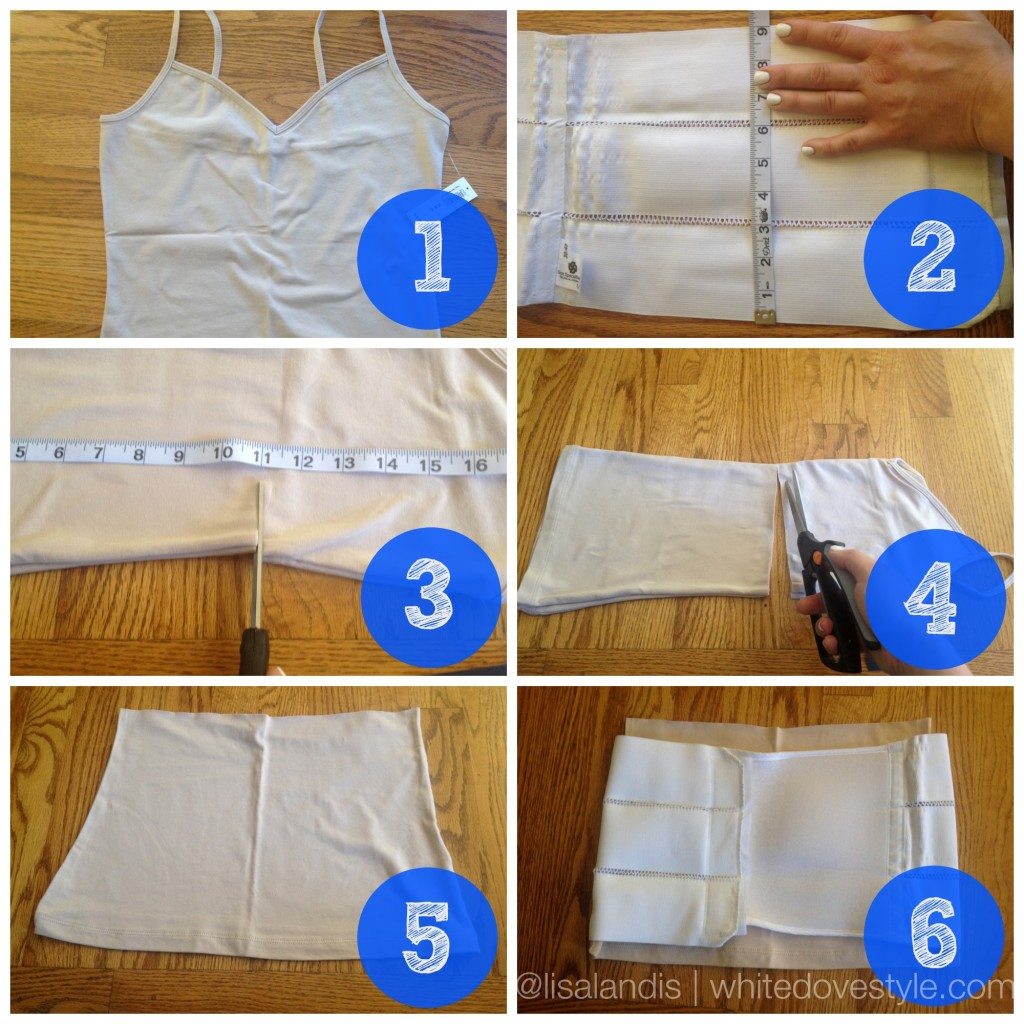
Would you believe that some professionals say that splinting is never necessary? Others say it should only be done after a certain amount of time post-pregnancy and after the right exercises have been tried. I guess I shouldn’t be surprised, since basic core rehab and splinting still isn’t a mainstream practice in maternal care.
However, no one would deny a cast to a woman with a broken leg. If someone sprained their ankle, they’d ideally be offered a splint and some physical therapy. Yet women’s physical needs are often ignored while birth injuries even more severe than diastasis go undiagnosed and untreated.
Your core is designed to be at the center of all your motion. It’s made to support your internal organs and spine. It has the ability to be both solid and firm, but also supple and flexible. If your core isn’t doing those things, please consider adding a splint to your toolbox of resources.
Do you think splinting can help abs?
Leave a comment and share your experiences with splinting (or not) and let us know your thoughts. If you have questions about finding a good splint, please visit this post for our recommendations.
I firmly believe we need to get a splint and a list of basic belly-breathing and pelvic floor exercises + some simple alignment tips into the hands of each new mom within hours after she has her baby. I believe it should be standard operation procedure in birth centers and hospitals worldwide.
Why am I such a big believer? Not just because I’ve done my research (seriously — click all the pics and links) but also because it helped me!
Two years AFTER having my second child, I found Kelly Dean and went through her program which included a splint and specific exercises and alignment changes. Just 3 weeks into her 6-week program, my incontinence, lower back pain, and DR width had all significantly improved: Click here to see pictures.
It’s nuts that I wasn’t educated about diastasis recti and abdominal binding before having kids, because I have a college degree in exercise and sport science from OSU and multiple fitness certifications. Regrettably, their emphasis was on aesthetics: six-packs, bodybuilding, muscle sculpting, and understanding the “fat burning zone” and principles of adaptation. Thus, I looked strong, but I was dealing with stress incontinence, lower back pain, doming and coning when I did situps, plus my residual deflated “mummy tummy” which I had been LITERALLY TAUGHT was normal!

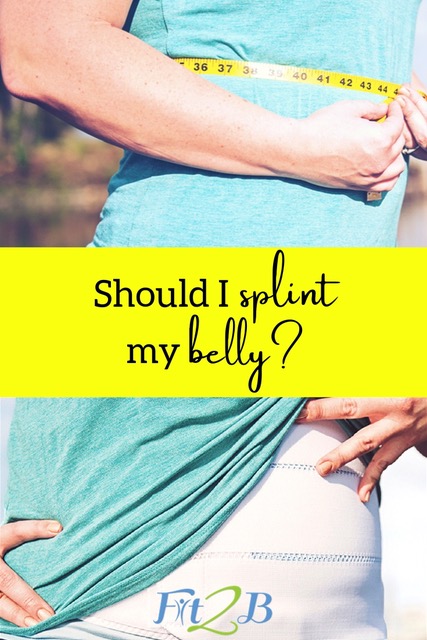
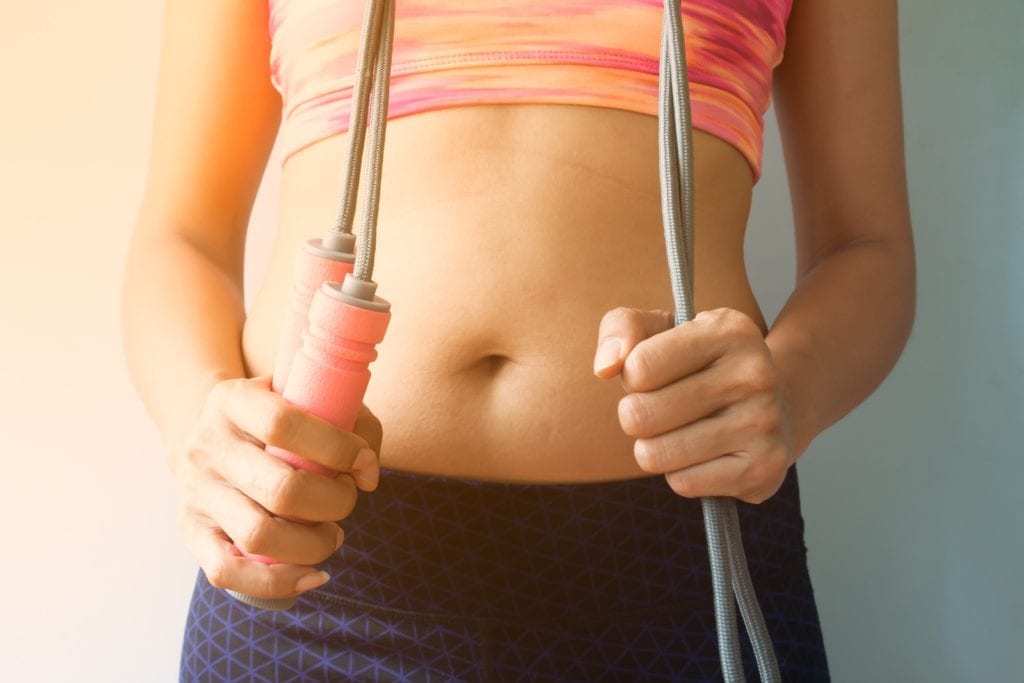
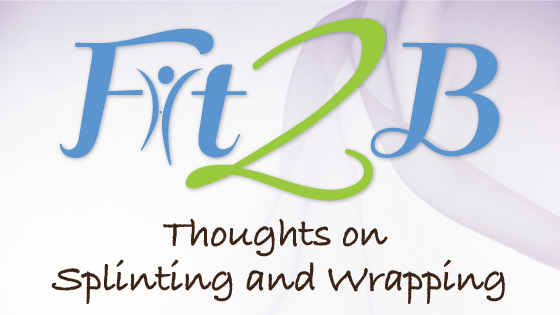
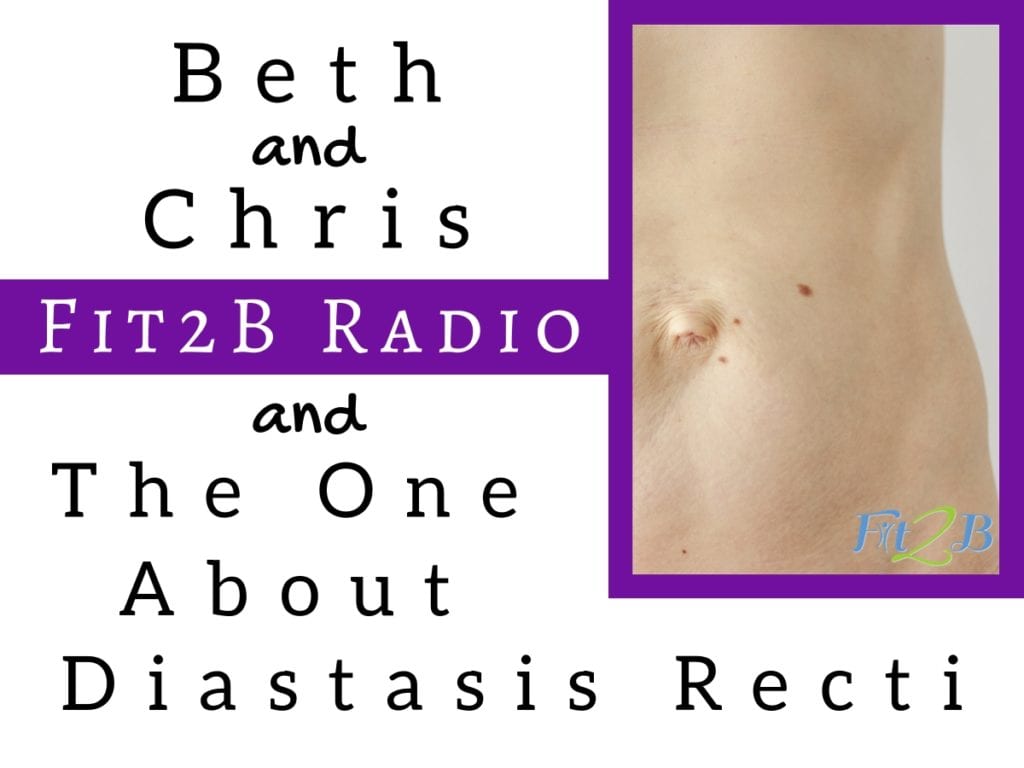
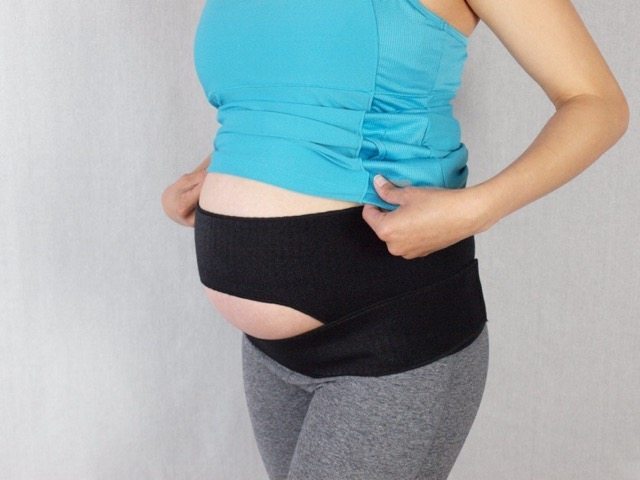

Thanks for this. I am pregnant with #4 and found info on this a while after I had #3 but thought it was too late to make much of a difference. I’m going to be prepared after this one is born! I plan on having all of this stuff at home and ready so I can get started right away!
Thank you for sharing this important info. I’ll definitely be sharing on facebook!
I used a Belly Bandit (purchased on Craigslist) for a few weeks after the birth of my daughter was born and not only did it help a lot, it felt good! After giving birth, I (as many do) had extra skin and ‘stuff’ around my belly and that pressure felt great! The Belly Bandit wasn’t perfect in that I have wide hips and a small waist, so I often had to tug it back down into place, but my uterus returned to its pre-pregnancy size in record time and I quickly not only dropped my baby weight, but also went under pre-pregnancy weight (I am sure this is due to many contributing factors, including the belly binding). Thank you for sharing this information, this is a widely unknown practice in the US, but it is wonderful!
I came across this article a few months ago and I just had my baby on Friday. I have been trying to find something to bind my belly, but in all the research I have done, I haven’t been convinced that any of the products on amazon or belly bandit are the best way to bind. You said you got yours from thetummyteam.com but I didn’t see where you could purchase them. What do you recommend? This is my 4th and possibly last baby and my abs have felt so sore since having her, so I think binding my belly will be really helpful. Thanks for the help and I’m excited to get to the point to do the exercises.
After 5 children ranging in age from 21 – 7 years old, and one, possibly 2, miscarriages, I wonder if belly binding would help me. I am small, 5’1″, but I weigh 125-130 pounds, and my waist is staying at a stubborn 30-31″. My back hurts all of the time, and I usually blame it on falling 40′ back when I was 17, then the births of my children. The last 2 were particularly hard births–all but the first were Pitocin inductions. My kids and I walk most days (2-3 miles), and I do a workout routine on the days when we don’t walk. I thank you for any advice.
I just wanted to add that I started splinting (soon after I found out about diastasis from Fit2B) now that the youngest of my 6 children is 2 1/2 years old.
I wish I had known this sooner!
Splinting along with Bethany’s exercises has really helped me heal.
The splint I bought was Gabrialla from Target, just to give some other options if you can’t afford the higher priced ones. (If you have the Target Red Card you get 5% off and free shipping) It’s less expensive than some of the other ones, and highly effective. It’s comfortable, too. I agree with the reviewer that said to buy a size smaller than you think you need.
http://www.target.com/p/gabrialla-breathable-elastic-abdominal-binder-white-9-wide/-/A-10950836#prodSlot=medium_1_2&term=Gabrialla
So I am looking at the one for “pear shaped” but it isn’t very long. I.m afraid it’s just going to give me 2 pooches :/ should I just go for the longer one?
Hi Sara, If you have a longer torso, go ahead and get the 3 or 4 panel scott binder from Sante Mama. You can call them for further advice. They’re lovely and helpful ladies 😉
How soon after a c section can I wear a splint? This will be my 3rd section and I need to wear one. Thanks for all you do!
I had an emergency c section and was in extreme pain. A friend insisted I use C Section Recovery Kit by Abdomend – http://www.csectionrecoverykit.com. It came with an instructional dvd for massage techniques and care, along with essential oils and the medical grade binder. Coughing and sneezing were extremely painful, let alone moving around to care for my baby. With the binder I was able to breastfeed, carry my baby, and do my own daily functions without fear of the incision tearing.
With the C Section Recovery Kit, diet, and exercise I was able to get my body and my confidence back. I just only wish my doctor had informed me of what to do after my surgery. I highly recommend this product and the ancient technique of belly binding!!
that’s a great testimony! I’ve heard many other good reviews about Abdomend, and several of my colleagues recommend it. I recently added it to our splinting page here.
I was given a hospital grade binding wrap at the hospital after my 4th baby was born p, exactly one month ago. How do I know if it’s the right kind, and not making it worse?
Pingback: Another Gap in Maternal Care-Diastasis Recti
Pingback: Diastasis Recti, What Women Need to Know | Pregnancy Exercise
Pingback: Exercising & Your Breasts | Fit2B Studio
Pingback: Diastasis and Tummy Tucks vs. Abdominal Rehab
Would binding be safe to do after a tummy tuck? My diastasis isn’t terrible I just have a ton of extra skin from 5 pregnancies including one twin pregnancy. But they will do some muscle repair once they’re in there. I’ve been researching for the best way to come back post muscle repair/tummy tuck amd gently ease myself back into normal life and exercise.
Hi Brooke, most surgeons offer a binder for use after tummy tuck surgery.
I think my separation is about 4″, Even though I had it down to 1″ prior to this pregnancy with physical therapy. I’m about 18 weeks along now, the muscles are sore, I also feel tension in the upper part of my abdomen like the separation is migrating upwards- wondering what kind of splint or binder I can use during pregnancy to keep this from getting worse.
If you are physically active, like a runner or avid exerciser, I’d recommend the Fitplint. Otherwise, I recommend The Tummy Team 4-panel for pregnancy. Both are mentioned in the article, and the companies are wonderful with customer service, so you can reach out to them directly for advice.